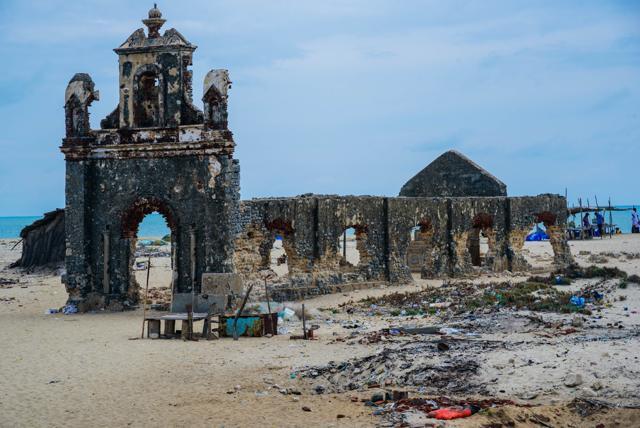The Konark Sun Temple is a UNESCO World Heritage Site located in Konark, Odisha. It's construction began in the 13th century CE (Common Era) during the reign of King Narasimhadeva I of the Eastern Ganga dynasty. It is believed that the temple was built between 1250 and 1260 CE.
The temple was dedicated to the Sun God, Surya, and was designed in the form of a colossal chariot with intricately carved stone wheels and horses. The architectural style of the temple is known as the Kalinga architecture, which was prominent in the region during that time.
While the main structure of the temple was completed during the reign of King Narasimhadeva I, some of the finer details and sculptures were likely added in subsequent years. The temple complex originally consisted of the main temple, additional smaller temples, and various structures. However, much of the complex is now in ruins, with the main sanctum and some portions of the temple still standing.
The temple is famous for its architectural brilliance and intricate stone carvings. However, one of the intriguing mysteries surrounding the temple is the absence of the main magnet from the original structure. According to ancient legends, there was a massive magnet at the top of the temple's main spire, which helped the temple's colossal stone chariot stay suspended in the air. This magnet was believed to be responsible for the temple's unique construction, as the iron in the chariot's wheels would be drawn towards the magnet.
Over time, the magnet disappeared, and its whereabouts remain unknown. Various theories and speculations exist regarding its disappearance. Some suggest that it was removed by invaders or plunderers who sought to dismantle the temple, while others propose that natural forces, such as lightning or earthquakes, could have caused its removal or destruction.
Despite the mystery surrounding the missing magnet, the Konark Sun Temple continues to be a remarkable architectural marvel and a popular tourist attraction, drawing visitors from around the world.
The Sun Temple at Konark features intricately carved stone sculptures, including a large stone structure resembling a chariot. The chariot-like structure is adorned with stone wheels. These wheels are intricately carved and are an integral part of the temple's architectural design.

The mention of the magnet in the context of the Konark Sun Temple is often found in ancient legends and folklore, but it does not have a factual basis. The concept of a magnet or the idea that the chariot's wheels were once suspended in the air by a magnet is considered more of a mythical or symbolic element associated with the temple rather than a historical fact.
The Konark Sun Temple has several legends associated with its origin and significance. One of the popular legends is the story of Samba, the son of Lord Krishna, and his curse.
According to the legend, Samba, filled with pride and arrogance, once ridiculed the sage Narada. As a result, Narada cursed him with leprosy. In order to seek a cure for his affliction, Samba embarked on a pilgrimage and eventually reached the shores of Odisha.
While in Odisha, Samba worshipped the Sun God, Surya, with great devotion. Pleased with his prayers and penance, Surya appeared before him and blessed him with a cure for his leprosy. In gratitude, Samba vowed to build a magnificent temple dedicated to Surya.
Samba then undertook the task of constructing the temple at the place where he received the divine blessing. However, there was a condition that the temple had to be completed within a specific time frame. Unable to complete the temple within the stipulated time, Samba faced divine consequences.
As a result of Samba's failure to complete the temple, he was struck by a divine arrow, and the construction work came to a halt. The temple was left unfinished, with only the main structure and some portions of the complex remaining. This is believed to be the reason for the incomplete state of the Konark Sun Temple.
Although the legend provides an explanation for the temple's incomplete status, it is essential to note that it is a mythical story passed down through generations, and the actual historical reasons for the temple's incomplete state might be different.
The Konark Sun Temple continues to be a symbol of architectural excellence and a testament to the rich cultural and artistic heritage of Odisha.
The legend associated with the Konark Sun Temple does not directly mention or relate to magnets. The mention of magnets in connection with the temple is not a part of the original legend but rather a speculative element that has been added in later interpretations and folklore.
The legends surrounding the Konark Sun Temple primarily revolve around the construction of the temple, the curse and redemption of Samba, the son of Lord Krishna, and the divine consequences for the unfinished temple. These legends do not explicitly mention magnets or their role in the temple's construction or design.
The concept of a magnet being associated with the temple, specifically in relation to the chariot's wheels or the temple's construction, is more of a mythical or symbolic interpretation rather than an integral part of the original legends. It is important to note that the addition of magnet-related elements might have emerged over time as imaginative interpretations or speculative stories around the temple's mystical and architectural aspects.
There is no credible historical or archaeological evidence to support the claim that magnets were used in the construction of the Konark Sun Temple or that they played a role in the temple's design or functionality.
The idea of magnets being used in the temple is primarily based on folklore, legends, and speculative interpretations rather than concrete evidence. While the legends and folklore may mention magnets, it is important to approach such claims with a critical mindset and consider them as mythical or symbolic elements rather than factual historical information.
Archaeological studies and research on the Konark Sun Temple have primarily focused on its architectural features, carvings, and historical context. There has been no substantial evidence or documentation found to support the existence or use of magnets in the temple's construction.
It is worth noting that the temple itself is a remarkable architectural marvel, renowned for its intricate stone carvings and impressive craftsmanship, which do not require the presence of magnets for their creation. The beauty and grandeur of the temple can be appreciated without relying on the notion of magnet usage.



No comments:
Post a Comment